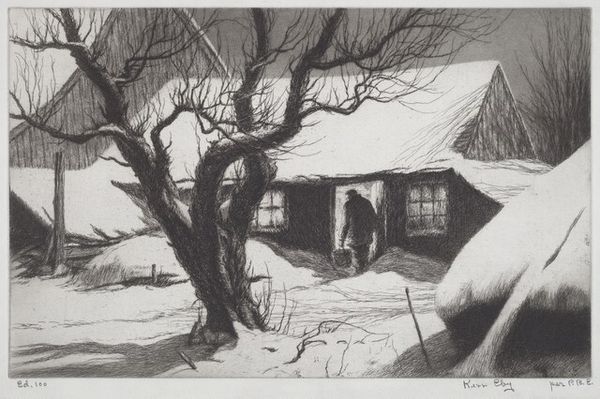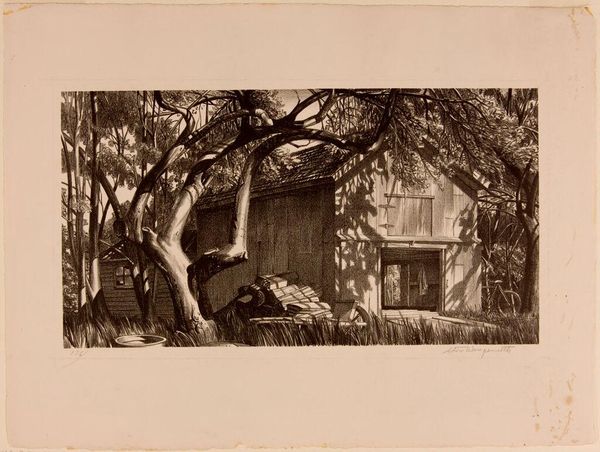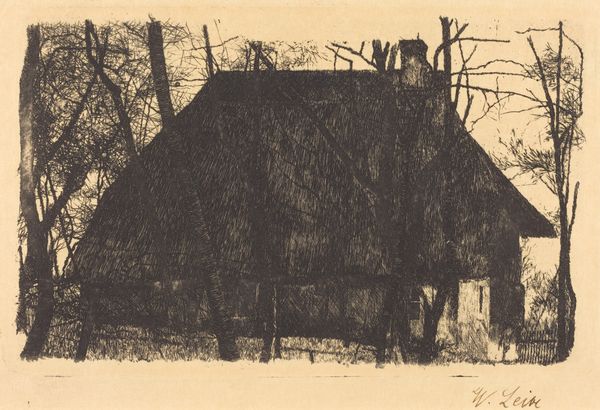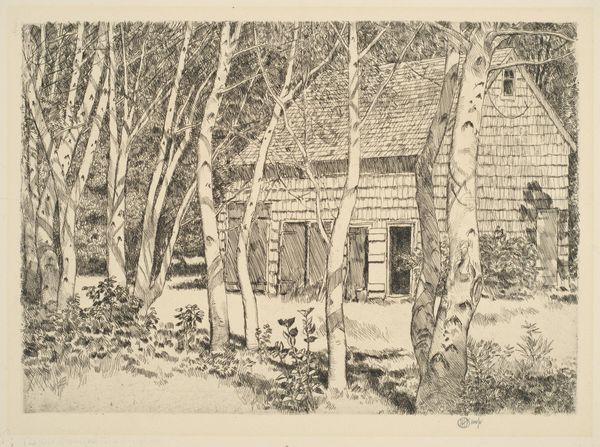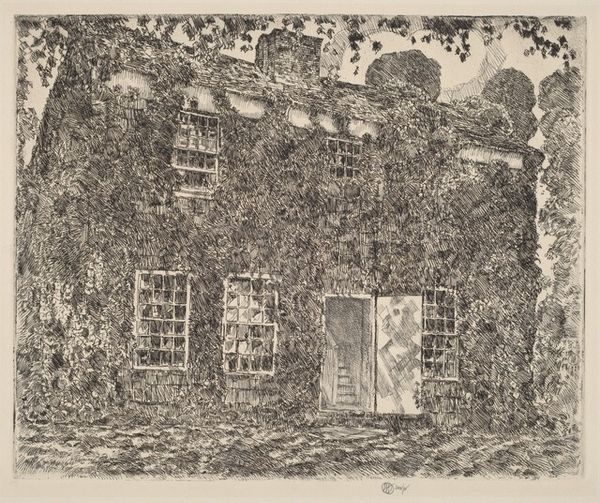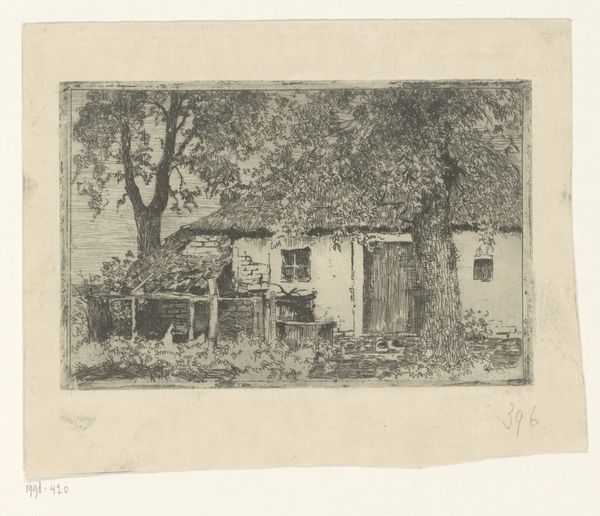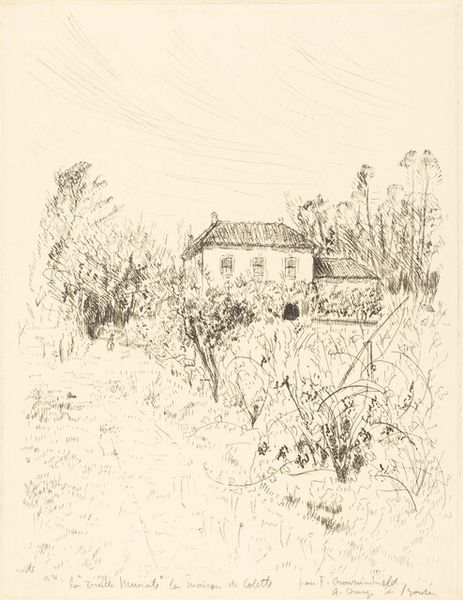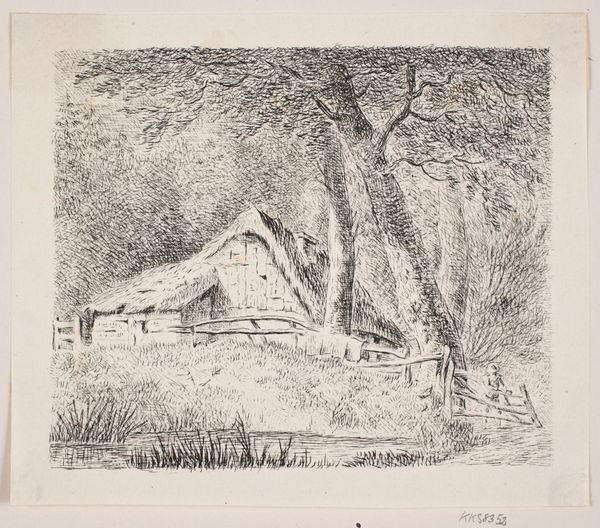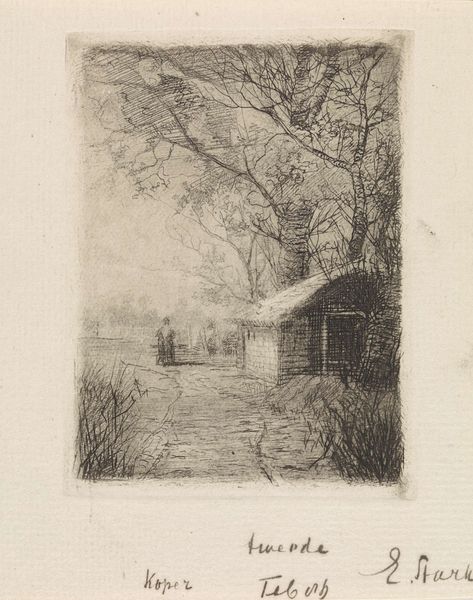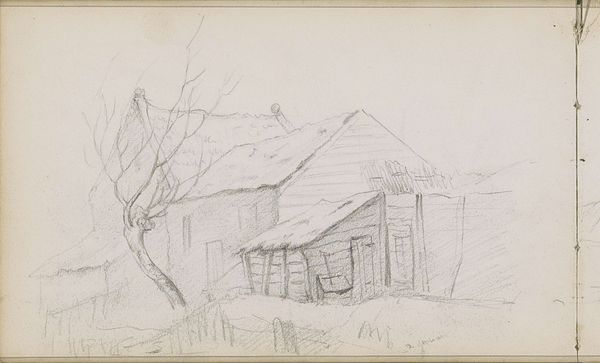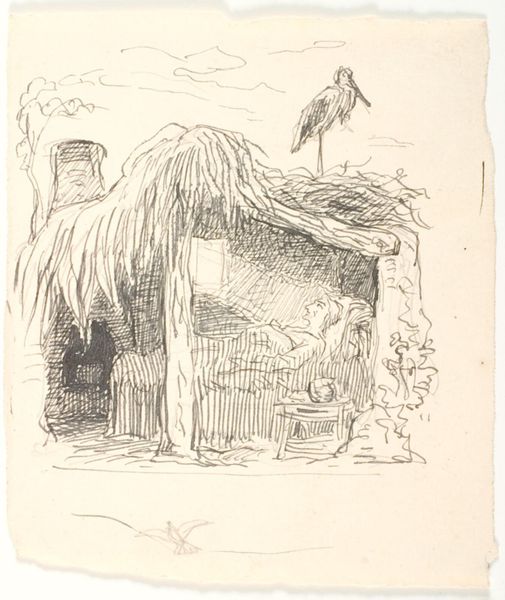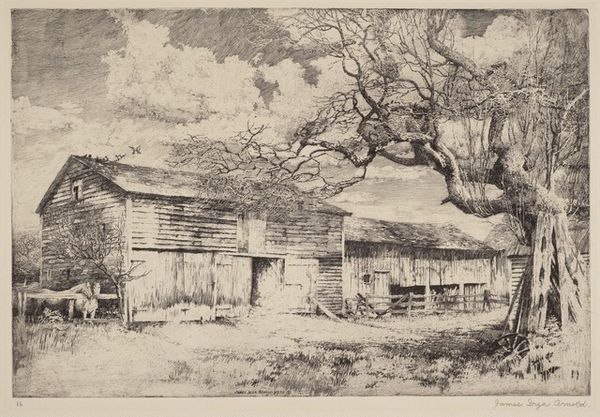
drawing, print, graphite
#
drawing
# print
#
landscape
#
figuration
#
line
#
graphite
#
realism
Copyright: National Gallery of Art: CC0 1.0
Ella Fillmore Lillie created “Tabby Ruins, Retreat Plantation” using etching, a printmaking technique that emphasizes the interplay between material and process. The fine, detailed lines are achieved by drawing into a waxy, acid-resistant ground applied to a metal plate, which is then bitten by acid. This intaglio process allows for a high level of detail, capturing the crumbling texture of the tabby ruins – a building material made from lime, sand, water, and oyster shells. The choice of etching as a medium enhances the artwork’s narrative. Etching allowed Lillie to explore themes of decay and the passage of time. The delicate lines mirror the fragility of the ruins, overgrown with vines, suggesting a slow but inevitable process of nature reclaiming what was once built. The use of printmaking – a process inherently linked to reproduction and distribution – invites a wider audience to reflect on these themes, connecting the history of the plantation with contemporary society. Ultimately, understanding Lillie’s "Tabby Ruins, Retreat Plantation" requires attention to both the physical materials and the historical context, challenging us to consider the complex relationship between art, craft, and the stories they tell.
Comments
No comments
Be the first to comment and join the conversation on the ultimate creative platform.
